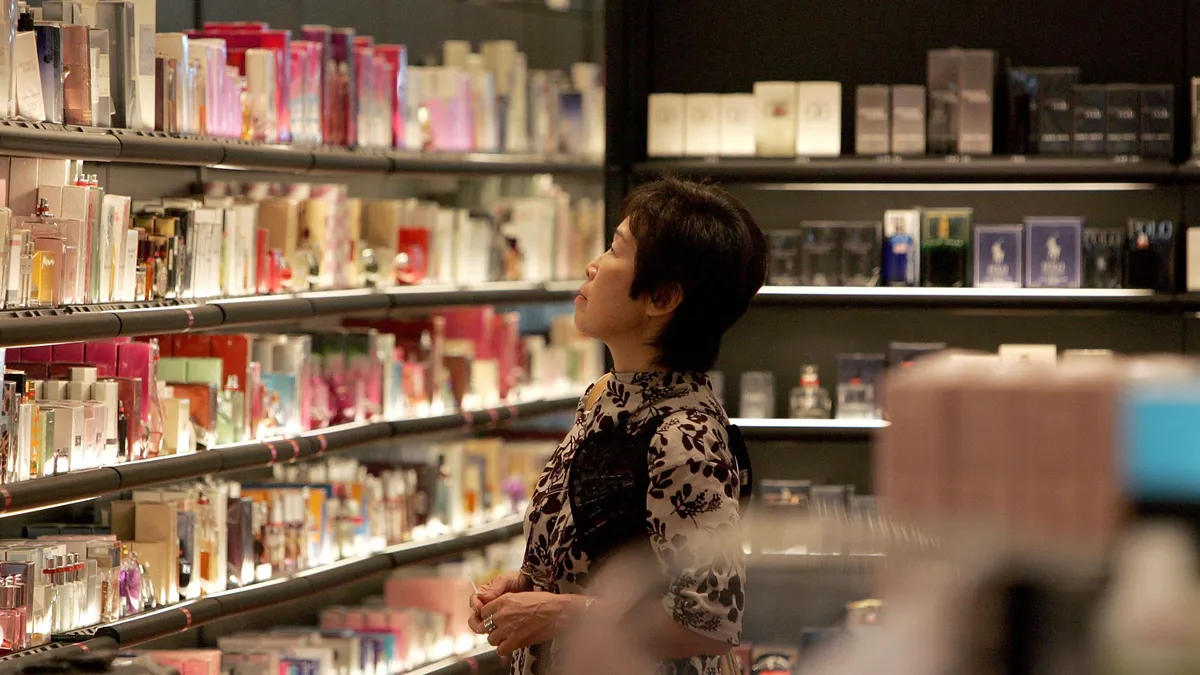Dive Brief:
- While inflation-sensitive consumers are trading down on certain online purchases, they are splurging in the cosmetics category, per a new report from Adobe Analytics.
- Online shopping data covering the first five months of 2024 reveal that consumers are trading down in categories like groceries, electronics and apparel, but are trading up to buy such luxury beauty items as fragrances and lipsticks. During the period, consumers spent $16.3 billion online on cosmetics, up 8.8% year over year. That compares with a 3.2% year-over-year increase for electronics and 2.9% rise in apparel.
- The Adobe study covering Jan. 1 through May 31 tracked more than one trillion visits to U.S. retail sites, 100 million SKUs and 18 product categories.
Dive Insight:
While the categories of electronics, apparel, furniture and groceries represent the largest portion of online sales at over 50% of overall spend, most consumers are buying less expensive products in those categories as a hedge against inflation. Cosmetics has been the outlier category, per the report.
“You have consumers looking for an opportunity to indulge and splurge on something when they’re having to do the opposite in so many other categories,” Vivek Pandya, lead analyst of Adobe Digital Insights, told Retail Dive. “We’ve seen them having to hold back spending on certain items, trade down to buying cheaper versions. And cosmetics is one of the products, especially lipsticks and fragrances, where they feel quite comfortable in trading up.”
By dividing products into four price levels, Adobe was able to pinpoint where the biggest sales increases were coming from. For the two least expensive quartiles, the firm found share across major categories — including electronics, apparel, home and garden, furniture and bedding, grocery and personal care — increased. For the two most expensive quartiles, share decreased substantially across major categories.
Given the ongoing concerns over inflation and the economy, many customers continued to spend but did so cautiously. Trading up to buy prestige cosmetics may help to satisfy a consumer's wish to feel better about their financial situation, per the company.
“We see consumers across the board switching to cheaper versions of goods,” Pandya said. “They may go from the organic option in groceries to the nonorganic version; from a premium brand to a store or generic brand; and the same with apparel.”
Cosmetics bucked the trend though, with sales of fragrances and lipsticks both up thanks to strong increases in the most expensive quartiles. Daily sales of fragrances online were up 53% from April to May versus daily sales in January, according to the Adobe report. On a year-over-year basis, those sales were up 27%. Similarly, lipstick saw online daily sales increase 49% April to May versus daily sales in January and 27.7% year over year.
Other subcategories within the cosmetics space also saw a sizable bump in sales for the first five months of the year. Lip gloss sales were up 31% year over year, setting and finishing products grew 18%, mascara was up 8.6%, concealer and foundation up 8.3% and nail polish up 5.1%.
While tracking both e-commerce activity and social media interest, Adobe predicts hot cosmetics sellers this year to include products from Sol de Janeiro, Clinique, Charlotte Tilbury, Summer Fridays and Laura Mercier.
Prestige fragrance sales online during early Q4 last year were nearly double the rate of brick-and-mortar stores, according to a Circana analysis. And in a May 2023 report on the state of the business from McKinsey & Company, the beauty market was projected to grow 6% annually through 2027, with online beauty sales in the U.S. expected to reach $45 billion by 2027.














